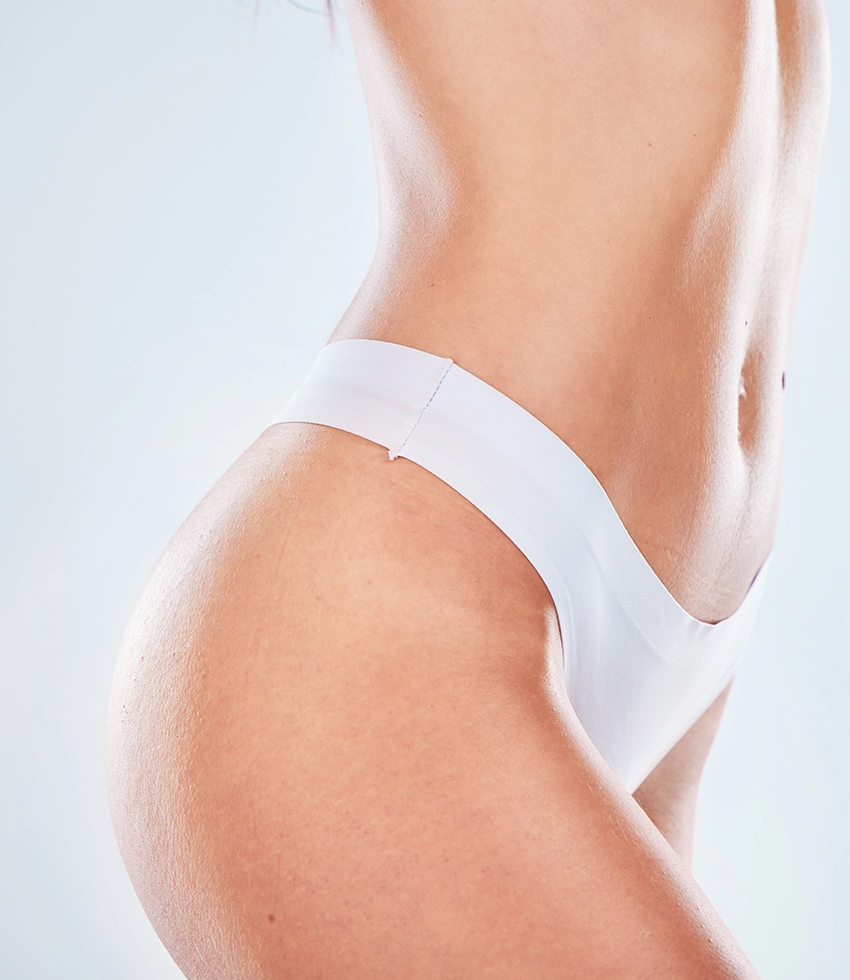
The Buttock Lift can be performed as a solo procedure or as part of the total body lift. Our skilled plastic surgeons employ innovative techniques to achieve natural-looking results, focusing on contouring and lifting to create a shapelier and more defined buttock profile. Whether you’re looking to address sagging, asymmetry, or simply enhance your curves, our personalized approach ensures a tailored solution for each individual. Discover a confident and rejuvenated you with our transformative butt lift procedure, designed to bring out the best in your natural beauty.
Revitalize your buttocks with a buttock lift, targeting sagging due to aging, sun damage, pregnancy, weight fluctuations, and genetics. This procedure removes excess sagging skin and fat, resulting in a smoother, more appealing contour. While it won’t increase buttock size, a traditional gluteal lift can notably improve dimpled or irregular skin surfaces. It can be done separately or as part of a comprehensive body lift.
Buttock Lift won’t:
To enhance volume, procedures such as fat grafting, buttock implants, or auto-augmentation (retaining some of your own tissue beneath the skin) may be employed. Liposuction is occasionally incorporated to refine overall contouring.
Is it right for me?
Buttock lifting is a highly individualized procedure, and you should do it for yourself, not to fulfill someone else’s desires or to try to fit any sort of ideal image.
Buttock lifting may be a good option for:
Your consultation is your time to ask the doctor about the procedure you’re considering, how he thinks it will work for you and any concerns you may have.
Questions to Consider:
Your surgeon will:
After your consultation with the physician, you will meet with the practice manager to discuss procedure costs.
Comprehensive comprehension of every facet of your body contouring procedure is crucial. It’s normal to experience a range of emotions, from excitement about the anticipated transformation to a bit of preoperative stress. Don’t hesitate to openly discuss these feelings with your plastic surgeon.
There are several things to do prior to your procedure that will make your recovery as smooth as possible and ease your pre-procedure anxiety.
Your Pre-Op Checklist:
Day of Surgery:
Anesthesia:
Medications for comfort during arm lift surgery are administered, with options including intravenous sedation or general anesthesia, tailored to your specific needs by your doctor.
The Incision:
In one common gluteal lift technique involves an incision just below the buttocks, placed in the crease between the buttocks and upper thigh. This method removes excess skin and tissues, resulting in a more defined crease and potential smoothing of the skin on the back of the upper leg.
Another technique is when an incision is made just below the waistline, often combined with an abdominoplasty incision for comprehensive body contouring. Liposuction may be employed to enhance contouring. If deemed suitable for auto-augmentation by your surgeon, strategically preserving some tissue beneath the skin can be part of the procedure.
Closing the Incisions:
Deep sutures within underlying tissues shape and support the newly contoured areas. Closure of skin incisions may involve the use of sutures, skin adhesives, tapes, or clips.
Recovery durations after Buttock Lift vary for each patient (days to months).
Following your buttock lift procedure, dressings or bandages will be applied to the incisions. To minimize swelling during the healing process, an elastic bandage or compression garment may be wrapped around your butt.
In some cases a temporary, thin tube may be placed to drain excess blood or fluid.
Following your surgery, you will receive guidance to wear a support garment continuously. Your surgeon will specify the duration for wearing this garment and inform you about any additional garments that may be necessary for your recovery.
You will receive detailed instructions covering:
Ensure you address specific queries about your individual recovery:
Your plastic surgeon and/or their team will provide detailed explanations of surgery-associated risks. Consent forms will be signed to ensure your full comprehension of the procedure and potential complications.
Some Risks Involved:

© 2024. ReGenesis Plastic Surgery and Dermatology. All rights reserved